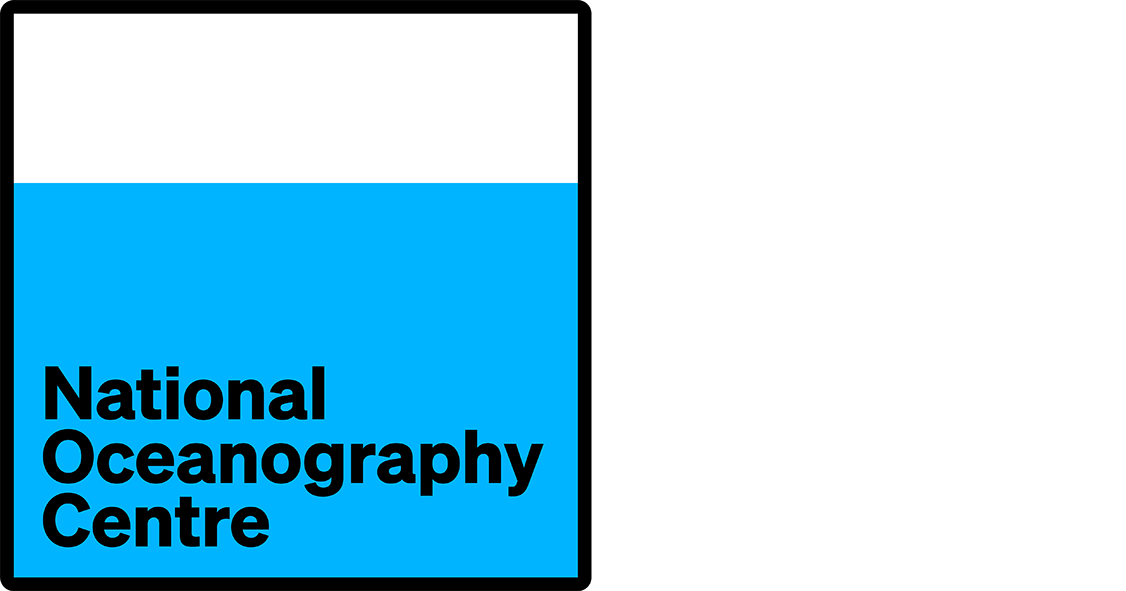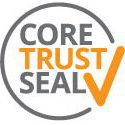Metadata Report for BODC Series Reference Number 735658
Metadata Summary
Problem Reports
Data Access Policy
Narrative Documents
Project Information
Data Activity or Cruise Information
Fixed Station Information
BODC Quality Flags
SeaDataNet Quality Flags
Metadata Summary
Data Description |
|||||||||||||||||||||||||||||||||
|
|||||||||||||||||||||||||||||||||
Data Identifiers |
|||||||||||||||||||||||||||||||||
|
|||||||||||||||||||||||||||||||||
Time Co-ordinates(UT) |
|||||||||||||||||||||||||||||||||
|
|||||||||||||||||||||||||||||||||
Spatial Co-ordinates | |||||||||||||||||||||||||||||||||
|
|||||||||||||||||||||||||||||||||
Parameters |
|||||||||||||||||||||||||||||||||
|
|||||||||||||||||||||||||||||||||
|
|||||||||||||||||||||||||||||||||
Problem Reports
No Problem Report Found in the Database
Data Quality Report
At JR40 station 021 the signal from the oxygen sensor was unusable (possibly due to the sensor cap being left on during the cast) and a new oxygen channel was constructed by calculating the mean of the oxygen channels at stations 020 and 022 at each pressure level. During station 085 the Data Acquisition and Processing Software (DAPS) was started during the downcast. The data from the top 800 m had to be reacquired and pasted into the remaining data, which required special manipulation of the data to match the times of both fragments.
Data Access Policy
Academic domain data
These data have no specific confidentiality restrictions for academic users. However, users must acknowledge data sources as it is not ethical to publish data without proper attribution. Any publication or other output resulting from usage of the data should include an acknowledgment.
The recommended acknowledgment is:
"This study uses data from data source/organisation/programme, provided by the British Oceanographic Data Centre and funded by the funding body."
Narrative Documents
Instrument Description
CTD unit and auxiliary sensors
The CTD system used on the JR40 was a GO/Neil Brown MkIIIc CTD Deep04, with 10-litre Niskin bottles fitted to the frame. The CTD was fitted with the following scientific sensors:
| Sensor | Serial Number |
|---|---|
| Chelsea Instruments Transmissometer | not provided |
| Simrad 200 metre Altimeter | not provided |
| FSI 24 Bottle Rosette Pylon | FSI No. 2 |
The salinity samples from the CTD were analysed during the cruise using two Guildline 8400b Autosal salinometers, serial numbers 63360 and 60839. Both salinometers were fitted with peristaltic pumps purchased from Ocean Scientific Ltd. Serial number 63360 was designated as the primary salinometer and was aligned against OSIL standard seawater batch P134.
Neil Brown MK3 CTD
The Neil Brown MK3 conductivity-temperature-depth (CTD) profiler consists of an integral unit containing pressure, temperature and conductivity sensors with an optional dissolved oxygen sensor in a pressure-hardened casing. The most widely used variant in the 1980s and 1990s was the MK3B. An upgrade to this, the MK3C, was developed to meet the requirements of the WOCE project.
The MK3C includes a low hysteresis, titanium strain gauge pressure transducer. The transducer temperature is measured separately, allowing correction for the effects of temperature on pressure measurements. The MK3C conductivity cell features a free flow, internal field design that eliminates ducted pumping and is not affected by external metallic objects such as guard cages and external sensors.
Additional optional sensors include pH and a pressure-temperature fluorometer. The instrument is no longer in production, but is supported (repair and calibration) by General Oceanics.
Specifications
These specification apply to the MK3C version.
| Pressure | Temperature | Conductivity | |
| Range | 6500 m 3200 m (optional) | -3 to 32°C | 1 to 6.5 S cm-1 |
| Accuracy | 0.0015% FS 0.03% FS < 1 msec | 0.0005°C 0.003°C < 30 msec | 0.0001 S cm-1 0.0003 S cm-1 < 30 msec |
Further details can be found in the specification sheet.
BODC Processing
169 CTD data files were provided by the originator for JR40. The files were in ASCII format and had been bin averaged by pressure to 2db. The headers of three files were compared for consistency using the plisth command in Unix. Each parameter selected for transfer was assigned a BODC parameter code as follows:
| Originator's Parameter Identifier | Units | Description | BODC Parameter Code | Units | Comments |
|---|---|---|---|---|---|
| cdepth | m | Corrected water depth | - | - | Parameter not selected for transfer |
| lat | deg | Latitude | - | - | Parameter not selected for transfer |
| lon | deg | Longitude | - | - | Parameter not selected for transfer |
| oxygen | µmol/kg | Concentration of oxygen in the water column | DOXYCZ01 | µmol/l | Converted from µmol/kg to µmol/l - conversion parameter TOKGPR01 added |
| potemp | °C | Potential temperature of the water column | POTMCV01 | °C | - |
| press | db | Pressure exerted by the water column | PRESPR01 | db | - |
| salin | psu | Practical salinity of the water column | PSALCC01 | psu | - |
| stn | no. | Station number | - | - | Parameter not selected for transfer |
| temp | °C | Temperature of the water column | TEMPS901 | °C | ITS-90 scale |
| - | - | Conversion factor (volume to mass) for the water column | TOKGPR01 | l/kg | Reciprocal of conversion used for oxygen channel |
The Matlab transfer function 401 was run to convert the ASCII files into the BODC internal NetCDF format (QXF). The oxygen channel was converted from µmol/kg to µmol/l by the transfer and a parameter detailing the reciprocal conversion factor was added to the converted data files. The parameters cdepth (m), lat (deg), lon (deg) and stn (no.) were not selected for transfer as the values were constant within each file. This information was extracted into tagged ASCII files which were later used to load metadata to the BODC database. The coordinates of the data files were checked using Google Earth to make sure that they matched the cast locations described in the cruise report.
Data from the QXF files were visualised using the in-house editor Edserplo. Obvious data spikes were flagged as 'M', null values were flagged as 'N'. Overall, the data are of good quality and there were no significant data spikes present.
Originator's Data Processing
The following information is adapted from the cruise report for JR40.
Sampling strategy
A Conductivity-Temperature-Depth (CTD) probe was used to vertically profile the temperature and salinity of the water column. In total 170 stations, including a test station (001), were occupied ranging in water depths from 100 - 4700 metres. At each CTD station on the cruise, 10-litre Niskin bottles were closed and sampled for salinity and oxygen analysis. The water bottles were gradually replaced or serviced during the cruise. Typical faults were leaking or stiff taps and leaking bottom 'O' ring seals. During station 151 five bottles were damaged, possibly due to one bottle closing at the surface then imploding at depth damaging the surrounding bottles.
The CTD cable presented problems throughout the first part of the cruise. As the load increased on the up cast the package would spin and wind the cable, resulting in kinks once the package was recovered and the load removed. A fin was fitted to the CTD frame. This stopped the rotation of the package but the problems with the cable persisted. The cable was replaced with a new one once the ship reached Rothera, after which there were no further problems.
The salinity samples were transferred from the Niskin bottles to 200 ml medicine bottles. The samples were analysed on the salinometer in batches of two crates, one vial of standard seawater was used at the beginning and end of each crate to enable a calibration offset to be derived and check the stability of the salinometer.
The concentration of dissolved oxygen was determined in seawater samples taken from individual Niskin bottles using a whole bottle Winkler procedure coupled to an automatic titration system with spectrophotometric endpoint detection.
Data Processing
The raw data were logged both on the Data Acquisition and Processing Software (DAPS) and on the CTD data/display systems. The Matlab script ctdcal was used to convert all variables in the raw data files from engineering to physical units. This also changes the time units from Julian day to seconds and applies the deltat correction to temperature and lag effect (hysteresis) corrections to pressure, and the correction to conductivity ratio.
The conductivity ratios from the salinity samples were entered into an Excel spreadsheet and the derived salinities transferred to the Unix system. The salinity and salinity calibration coefficients were calculated and appended to the data files using the salcal and salcal2 Matlab scripts. Oxygen concentrations and calibration coefficients were calculated and added to the data files using oxycal and oxycal2. The upcast data for each CTD cast (downcast in the case of oxygen) were despiked and gridded into 2 dbar pressure bins with linear interpolation used in regions of absent data. A full description of the CTD processing that took place can be found in the cruise report for JR40 (p25-27).
Field Calibrations
Pressure calibration involved a number of steps, including calculating a correction for the effect of temperature on the pressure offset. This required the construction of a lagged temperature (Tlag) from the time series of temperature at each CTD cast;
Tlag(t=t0+tdel) = W * Tlag(t-t0) + (1-W) * T(t=t0+tdel)
where W = exp(-tdel/tconst), tdel(= 1 s) is the time internal over which Tlag is being updated, and tconst is a time constant estimated as 400 s in laboratory experiments. Then;
P = P - 0.55 * (Tlag - 12)
The values of 0.55 and 12 were determined by inspection of on-deck CTD temperatures and pressures. An additional adjustment to upcast pressures was conducted to account for hysteresis in the CTD pressure sensor. The tables of pressure hysteresis corrections can be found on p22 and p24 of the JR40 cruise report.
Temperature was converted from engineering units (Traw) to deg C (T) based on the ITS-90 scale;
T = 4.9966928 x 10-4 * Traw + 0.13094213
A correction was applied to allow for the mismatch between the time constants of the temperature and conductivity sensors;
T = T + α * δT
Where α is a time constant chosen as 0.25 s. For the purpose of computing derived oceanographic variables, temperatures were converted to the 1968 scale (T68 = 1.00024 T).
Salinity was calibrated by comparison with upcast Niskin bottle salinities on a station by station basis. Least-squares linear regression with reference to the bottle salinities followed to derive a small correction (as a function of pressure temperature and conductivity) for the CTD salinity. Poorly fitting samples were excluded from the linear regression. The root-mean-square deviation of bottle and CTD salinities for 1298 good samples deeper than 1000m was 8x10-4.
CTD dissolved oxygen concentration was calibrated by fitting it to the bottle values. Only downcast CTD data were considered in the calibration. The fit coefficients were computed separately at each station by a least-squares minimisation algorithm. The root-mean-square deviation of bottle and CTD oxygens for 1299 good samples deeper than 1000 m was 2.18 µmol kg-1.
No bottle data were collected on casts 134, 153 and 154 hence there was no possibility of local salinity or oxygen calibration. The coefficients from neighboring stations (133, 152 and 155 respectively) were used instead. Bottle oxygen data from station 011 were bad and no direct computation of the CTD oxygen calibration coefficients was possible. As a result, those from station 010 were used in the calibration.
Project Information
Antarctic Large Scale Box Analysis and The Role Of the Scotia Sea (ALBATROSS)
The ALBATROSS project took place on the RRS James Clark Ross, an ice strengthened vessel operated by the British Antarctic Survey. The cruise left Port Stanley, Falkland Islands (Malvinas) on 15th March 1999 and returned there on 22nd April 1999. A total of 170 full depth CTD stations were occupied with sampling for chemical tracers and simultaneous lowered acoustic Doppler current profiler in situ velocity measurements. Five primary hydrographic sections were undertaken, which together complete a closed box around the Scotia Sea, a region of intense water mass modification. The cruise was designated JR40 by the British Antarctic Survey who ran the ship.
Objectives
The objective was to undertake a detailed hydrographic survey of a box surrounding the Scotia Sea. As well as traditional measurements of temperature, salinity and oxygen, CFCs, oxygen isotopes, tritium, helium and nutrients were sampled. The aims of the survey were as follows:
-
To determine the pathways of Weddell Sea Deep Water as it enters and leaves the Scotia Sea.
-
To quantify the cooling and freshening of Circumpolar Deep Water as it crosses the Scotia Sea.
-
To determine the pathway and transport of Southeast Pacific Deep Water across the Falkland Plateau.
-
To measure the transport of the Falkland Current and compare with the transport of the wind stress curl forced western boundary current.
-
To compute heat, fresh water and other tracer budgets for the Scotia Sea, southwestern Atlantic and western Weddell Sea.
-
To calculate the transport and characterise the fronts associated with the ACC as it enters and leaves the Scotia Sea.
-
To determine the interannual variability of the transport and water mass properties of the ACC at Drake Passage. Thus continuing the U.K.'s role in monitoring this important choke point.
-
To determine temporal changes to the water masses of the Scotia Sea and the extent to which recently ventilated deep waters may have been affected by possible climate change.
Data Activity or Cruise Information
Cruise
| Cruise Name | JR19990315 (JR40) |
| Departure Date | 1999-03-15 |
| Arrival Date | 1999-04-22 |
| Principal Scientist(s) | Karen J Heywood (University of East Anglia School of Environmental Sciences) |
| Ship | RRS James Clark Ross |
Complete Cruise Metadata Report is available here
Fixed Station Information
No Fixed Station Information held for the Series
BODC Quality Control Flags
The following single character qualifying flags may be associated with one or more individual parameters with a data cycle:
| Flag | Description |
|---|---|
| Blank | Unqualified |
| < | Below detection limit |
| > | In excess of quoted value |
| A | Taxonomic flag for affinis (aff.) |
| B | Beginning of CTD Down/Up Cast |
| C | Taxonomic flag for confer (cf.) |
| D | Thermometric depth |
| E | End of CTD Down/Up Cast |
| G | Non-taxonomic biological characteristic uncertainty |
| H | Extrapolated value |
| I | Taxonomic flag for single species (sp.) |
| K | Improbable value - unknown quality control source |
| L | Improbable value - originator's quality control |
| M | Improbable value - BODC quality control |
| N | Null value |
| O | Improbable value - user quality control |
| P | Trace/calm |
| Q | Indeterminate |
| R | Replacement value |
| S | Estimated value |
| T | Interpolated value |
| U | Uncalibrated |
| W | Control value |
| X | Excessive difference |
SeaDataNet Quality Control Flags
The following single character qualifying flags may be associated with one or more individual parameters with a data cycle:
| Flag | Description |
|---|---|
| 0 | no quality control |
| 1 | good value |
| 2 | probably good value |
| 3 | probably bad value |
| 4 | bad value |
| 5 | changed value |
| 6 | value below detection |
| 7 | value in excess |
| 8 | interpolated value |
| 9 | missing value |
| A | value phenomenon uncertain |
| B | nominal value |
| Q | value below limit of quantification |


